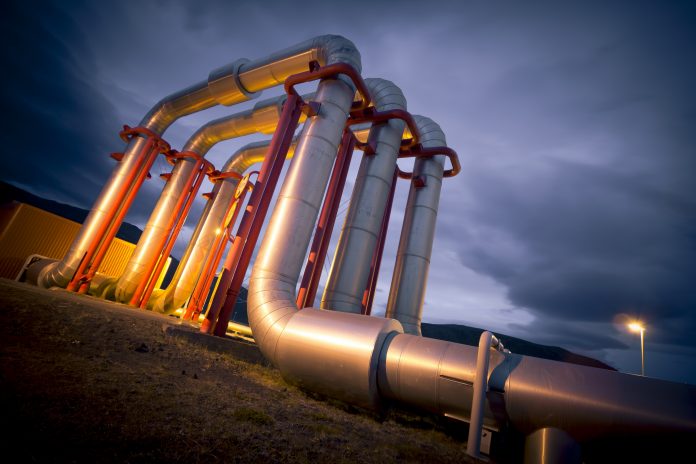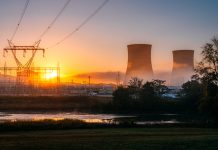Alex Hunter, CEO at Sherwood Power, argues that geothermal energy offers significant potential as a source of low-carbon energy, but there are challenges which must be addressed if the UK is to benefit
Geothermal energy has been praised for its ‘clean’ status, ready availability, and (relatively) low costs. Extracting geothermal energy doesn’t require burning fossil fuels, and closed-loop geothermal power plants emit no carbon emissions. In comparison to other sources of renewable energy, geothermal plants can also be considered ‘greener’: life cycle GHG emissions (50g CO2e/kWh) are four times lower than solar PV and six to 20 times lower than natural gas. Geothermal power plants also consume less water on average than most conventional generation technologies.
The second benefit of geothermal is its reliability: unlike other renewable energy sources, it is unaffected by the time of day, climate, season or weather conditions. This means once a geothermal power plant is set up, it can produce energy consistently. For example, a single plant could produce energy for around 8,600 hours a year, while a solar plant averages around 2,000 hours yearly. According to the U.S. Geothermal Technologies Office, most geothermal power plants run at 90% availability or higher, meaning ongoing energy costs are low – ranging from $0.01 to $0.03/kWh.
What are the challenges of geothermal energy?
Despite this, the installation costs for geothermal energy are significant. The International Renewable Energy Agency states that geothermal is the second most expensive renewable energy type by installation cost, and costs have actually increased over the past decade; in 2020, installation costs reached $4,468/kW, up from $2,620/kW in 2010. These costs are driven by equipment-intensive procedures and geographical limitations.
However, the main challenge for the UK is ensuring that any geothermal energy harnessed is made available in the right place. By its nature, geothermal energy is geocentric (i.e. a hole has to be drilled in the right place), but supply is unlikely to be where consumer demand is. This means the energy faces the same challenges as other energy sources – how to ensure it is available on the grid.
Infrastructure issues are currently a significant barrier when it comes to energy transition in the UK. The Head of the UK National Grid has recently said that it needs to spend eight times the amount spent in the last 32 years on infrastructure just to get the energy from the North Sea into the National Grid. Meanwhile, the Infrastructure Commission has said we must spend £100 billion by 2025 to meet our net-zero commitments. Countries already successfully utilising geothermal energy typically do not face these challenges. Iceland, for example, has a good deal more geothermal activity than the UK, with over 200 volcanoes and several hot springs, so it is less location-restricted. It has also been drilling for hot water since 1928, meaning the country’s energy infrastructure has been developed to allow for the transfer of geothermal energy from the point of origin to where it is needed.
Aggressively exploring geothermal power
It’s no surprise, therefore, that the regions most aggressively exploring geothermal power as a renewable energy source are regions with significant tectonic activity. The UNEP African Rift Geothermal Development Facility Project, supported by the Icelandic government, explores how energy from the Great East African Rift System (a 6,500km stretch from northern Syria to central Mozambique) could be harnessed. It’s estimated that the Rift could generate 20 gigawatts of geothermal electricity, solving the problem of access to energy for large parts of the region. Meanwhile, parts of Asia are looking to benefit from the geothermal resources in the Pacific Ring of Fire, with Indonesia announcing ten projects planned to launch before 2026.
Geothermal energy – an opportunity for decarbonisation?
Ultimately, geothermal energy provides an opportunity for decarbonisation, but the reality is that it’s not a silver bullet. It is most beneficial if it becomes part of a hybrid solution that allows energy to be generated from multiple renewable sources. Regardless of the source, the UK needs to focus on developing its energy infrastructure to enable renewable energy to be distributed where it is needed, with flexibility at the grid edge, so it is available when it is needed. Only by achieving this will we benefit from a robust, decarbonised energy system.
References
- All the advantages of geothermal energy (no date) Enel Green Power. Available at: https://www.enelgreenpower.com/learning-hub/renewable- energies/geothermal-energy/advantages (Accessed: November 30, 2022).
- Cost of geothermal power plants to remain high in comparison to wind and Solar (no date) Fitch Solutions: Data, Research & Analytics for Credit Risk & Strategy. Available at: https://www.fitchsolutions.com/renewables/cost-geothermal- power-plants-remain-high-comparison-wind-and-solar-28-06-2022?fSWebArticleVa lidation=true&mkt_tok=NzMyLUNLSC03NjcAAAGIYvvNpABvQU7Bjlm_i_bhizpXQAHk ToOxgVgmoZ0dp-Y1o_tRxIbru01S9u6bNxwb6r8p8U71zPdQ- iXenxH7IZ%206MlgMt0mM0_JR18R51n_f1KQbv0w (Accessed: November 30, 2022).
- Iceland, a world leader in clean energy, supports Africa’s push for geothermal power (no date) UNEP. Available at: https://www.unep.org/news-and-stories/story/ iceland-world-leader-clean-energy-supports-africas-push-geothermal-power (Accessed: November 30, 2022).
- Mallows, R. (2022) Commission highlights “Slow progress” on infrastructure plans to deliver levelling up and net zero goals, NIC. Available at: https://nic.org.uk/news/slow-progress-on-infrastructure-plans-to-deliver- levelling-up-and-net-zero-goals/ (Accessed: November 30, 2022).
- Water Use in the Development and Operation of Geothermal Power Plants (January 2011) Table 4-3, page 26. Argonne National Lab.











